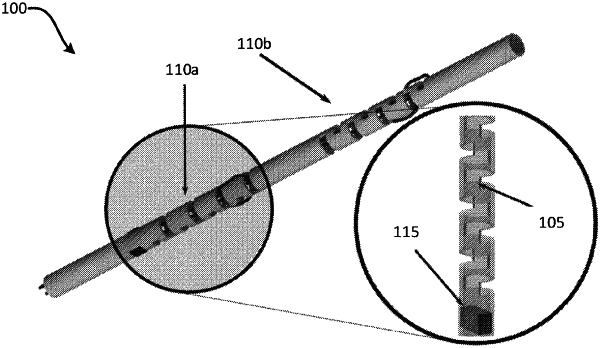| CPC A61M 25/09041 (2013.01) [A61M 2025/09116 (2013.01); A61M 2025/09141 (2013.01); A61M 2205/0216 (2013.01)] | 22 Claims |

|
1. A system for steering a guidewire comprising:
a continuous length of an elongate hollow body comprising:
a first joint portion defined by a first set of asymmetric recesses formed in the elongate hollow body;
a recess-free portion defined by an enclosed length of the elongate hollow body;
slots disposed within the recess-free portion of the elongate hollow body; and
a second joint portion defined by a second set of asymmetric recesses formed in the elongate hollow body;
wherein the first set of asymmetric recesses is offset from the second set of asymmetric recesses by from 1 to 180 degrees;
a tendon system comprising tendons operably connected to the first joint portion and the second joint portion;
a routing wedge disposed within the elongate hollow body spatially separating the tendons from one another; and
a control unit operably connected to the tendon system;
wherein the control unit is configured to actuate the tendon system to cause the first joint portion to bend in a manner providing a first degree of freedom of movement;
wherein the control unit is further configured to actuate the tendon system to cause the second joint portion to bend in a manner providing a second degree of freedom of movement different from the first degree of freedom of movement;
wherein the routing wedge comprises wedge portions receivable through the slots; and
wherein the received wedge portions define a central channel and outer channels.
|